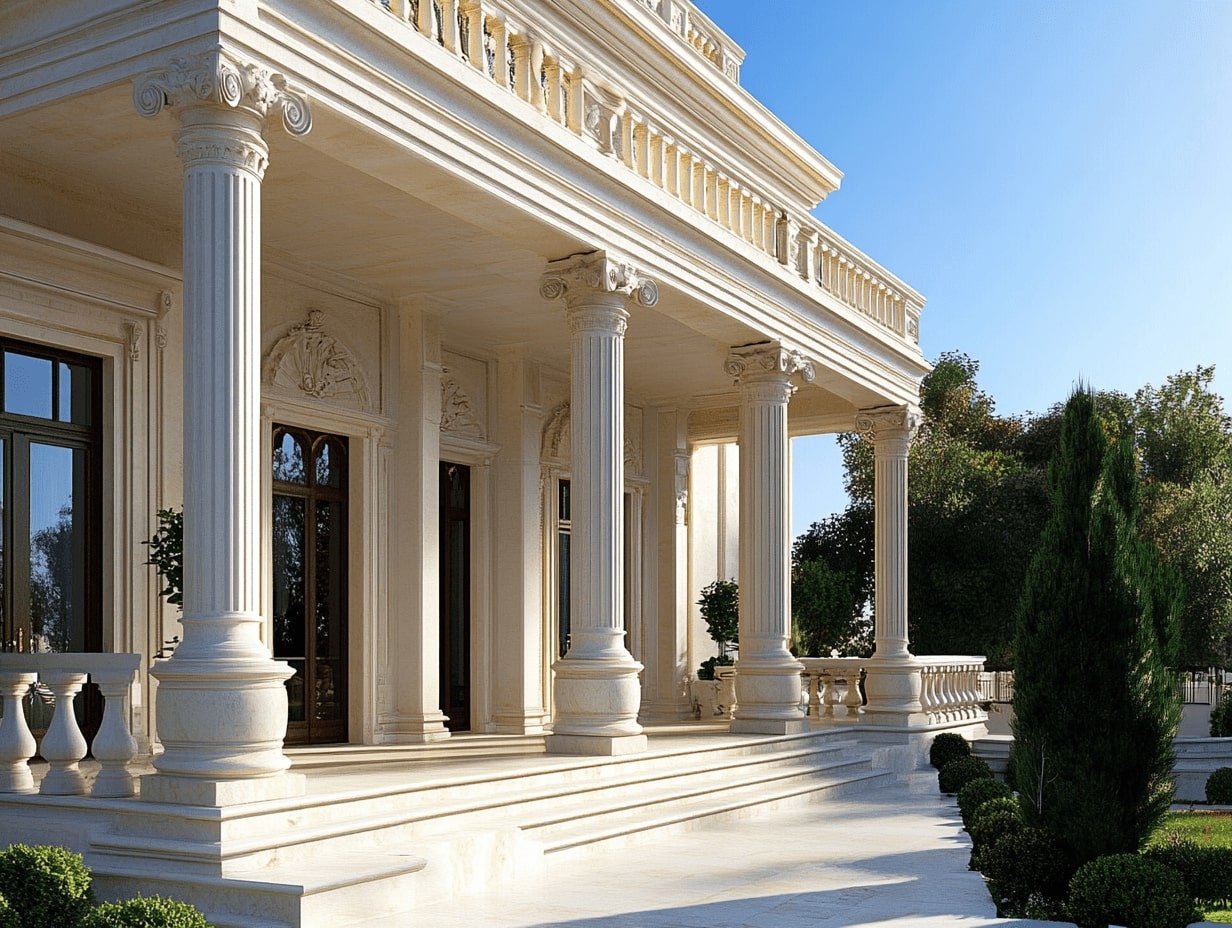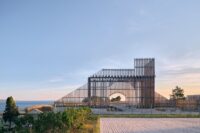- Home
- Articles
- Architectural Portfolio
- Architectral Presentation
- Inspirational Stories
- Architecture News
- Visualization
- BIM Industry
- Facade Design
- Parametric Design
- Career
- Landscape Architecture
- Construction
- Artificial Intelligence
- Sketching
- Design Softwares
- Diagrams
- Writing
- Architectural Tips
- Sustainability
- Courses
- Concept
- Technology
- History & Heritage
- Future of Architecture
- Guides & How-To
- Art & Culture
- Projects
- Interior Design
- Competitions
- Jobs
- Store
- Tools
- More
- Home
- Articles
- Architectural Portfolio
- Architectral Presentation
- Inspirational Stories
- Architecture News
- Visualization
- BIM Industry
- Facade Design
- Parametric Design
- Career
- Landscape Architecture
- Construction
- Artificial Intelligence
- Sketching
- Design Softwares
- Diagrams
- Writing
- Architectural Tips
- Sustainability
- Courses
- Concept
- Technology
- History & Heritage
- Future of Architecture
- Guides & How-To
- Art & Culture
- Projects
- Interior Design
- Competitions
- Jobs
- Store
- Tools
- More
The Place of Time and Form in Architectural Design: Shaping Spaces and Stories
Explore the intricate relationship between time and form in architectural design. This article delves into how historical context, cultural narratives, and evolving societal values shape our built environment. From Gothic cathedrals to modern sustainable designs, discover how architecture reflects the past while anticipating future needs.

In the world of architectural design, the interplay between time and form shapes the spaces we inhabit. Every building tells a story, reflecting not just the present but also the past and future. As we explore this dynamic relationship, we’ll uncover how time influences design choices and how form embodies cultural narratives.
Understanding the significance of time and form allows us to appreciate the layers of meaning behind architectural creations. From ancient structures that stand as testaments to bygone eras to modern designs that push boundaries, each element plays a crucial role in defining our built environment. Join us as we delve into this fascinating topic and discover how architects harness these concepts to create spaces that resonate with both functionality and beauty.

Table of Contents
ToggleUnderstanding Time in Architectural Design
Time profoundly impacts architectural design. It shapes how we perceive and interact with our built environment, reflecting historical narratives and anticipating future developments.

The Concept of Time in Architecture
Time serves as a critical element in architecture, influencing design decisions and the functionality of spaces. We recognize that architecture embodies more than immediate needs; it tells a story across various temporal layers. Each structure captures its era’s technological advancements, cultural values, and social practices. For instance, modernist buildings bring forward sleek lines and minimalist aesthetics, while traditional styles emphasize ornamentation and craftsmanship. Time not only informs the present state of a structure but also hints at its future adaptations and potential transformations. Architects often consider how spaces age and respond to changing contexts, ensuring their designs remain relevant and functional over time.
Historical Context and Evolution
Historical context significantly shapes architectural evolution. We see how buildings reflect shifts in societal values and technological progress throughout different periods. The Gothic cathedrals of the Middle Ages showcased humanity’s aspiration for the divine, while industrial structures marked a turning point in materials and construction techniques. As we progress into contemporary architecture, we observe a blend of past influences with cutting-edge innovations, such as sustainable design principles and smart technologies. The evolution of architectural styles evokes a narrative, with each period contributing uniquely to our understanding of space and form. This historical lens fosters a deeper appreciation for how architecture serves as a timeline of human experience and ingenuity.
The Role of Form in Architectural Design
Form plays a pivotal role in architectural design, as it shapes both aesthetic appeal and functional purpose. We recognize that architectural form embodies a building’s identity, influencing how individuals interact with and perceive spaces.

Defining Form in Architecture
Form in architecture refers to the shape and structure of a building. It encompasses various elements, including volume, mass, surface, and proportions. Each design choice contributes to the overall visual identity of the structure. Notable examples include the angular forms of modernism, characterized by clean lines and geometric shapes, and the organic forms of parametric design, which mimic natural shapes and patterns. Different forms communicate unique narratives, inviting exploration and interpretation from viewers.
Relationship Between Form and Function
Form and function are intrinsically connected in architectural design. While form defines the visual experience, function dictates the practical use of spaces. We design buildings to fulfill specific needs, ensuring that the form complements the intended purpose. For instance, an auditorium’s sweeping curves enhance acoustics and sightlines, while a commercial space’s open floor plan facilitates movement and interaction. This synergy ensures that architecture serves both aesthetic and utilitarian goals, creating environments that resonate with users on multiple levels.
Interplay Between Time and Form
The relationship between time and form significantly influences architectural design. We explore how temporal aspects guide design decisions and how form affects our perception of time.

Temporal Aspects of Design Decisions
We recognize that temporal considerations shape design choices at every stage of architecture. Factors such as historical context, technological advancements, and future adaptability come into play. Each design reflects a specific moment, echoing the values and materials of its time. For instance, the use of local materials in a structure not only demonstrates environmental responsiveness but also resonates with cultural heritage. By integrating the past and anticipating future needs, architects create spaces that maintain relevance across generations, emphasizing sustainability and historical dialogue.
How Form Can Influence Perception of Time
We understand that form significantly influences how we experience time within architectural spaces. The shape, scale, and configuration of a building can create an atmosphere that alters our perception. For example, tall, narrow buildings may evoke a sense of verticality and heighten temporal awareness, while expansive, open spaces can create a feeling of timelessness. Unique formations also guide movement and interaction, dictating how we traverse and engage with the environment. By manipulating form, architects can evoke emotional responses, shaping an experience of time that aligns with their design intentions and enhances our connection to the space.
Case Studies
This section highlights notable architectural works that exemplify the interplay of time and form in design. We explore key projects that illustrate how these elements shape our understanding of space and functionality.

Notable Architectural Works Exemplifying Time and Form
-
Notre-Dame Cathedral, Paris
Notre-Dame stands as a historical masterpiece, merging Gothic architecture with layers of cultural significance over centuries. Its intricate façade and flying buttresses not only reflect the era of its construction but also embody the evolving functions of sacred spaces.
-
Fallingwater, Pennsylvania
Designed by Frank Lloyd Wright, Fallingwater harmonizes with its natural surroundings. The organic forms integrate seamlessly with the landscape, emphasizing a relationship between time, nature, and human intervention. This design showcases how architectural form can enhance the experience of fleeting moments.
-
The Sydney Opera House, Australia
This iconic structure demonstrates the transformative potential of architectural form. Its sail-like shapes symbolize innovation and artistic expression while becoming a cultural landmark. The design captures the spirit of its time, merging functionality with a forward-thinking vision.
-
The High Line, New York City
Created from a repurposed railway line, the High Line embodies adaptive reuse. Its design integrates green spaces with urban living, illustrating how structures can evolve over time. The linear form enhances the experience of movement through the city, demonstrating a dynamic interaction with the surrounding environment.
Lessons Learned from Various Designs
-
Understanding Historical Context
Each project illustrates the importance of historical context in shaping design. Incorporating elements from bygone eras creates continuity, allowing new structures to resonate with previous generations.
-
Emphasizing Adaptability
Adaptive designs highlight the necessity of flexibility. Our built environments must evolve to meet changing needs, ensuring that architectural forms remain relevant through time.
-
Enhancing User Experience
Architectural form impacts how individuals interact with spaces. Thoughtful designs that consider human scale and movement create an emotional connection, enriching our experiences.
-
Balancing Aesthetic and Functionality
Successful designs blend form and function. Structures that prioritize both aesthetic appeal and practical use resonate more deeply, serving as lasting spaces for communities.
-
Promoting Sustainability
Sustainable design practices encourage harmony between the built environment and natural systems. By considering the long-term effects of materials and energy use, architecture can honor time’s passage while preserving resources for future generations.
Conclusion
We recognize the significant interplay between time and form in architectural design, shaping not only our built environment but also our experiences within it. Every architectural project embodies a narrative that intertwines historical significance, present functionality, and future adaptability.
We observe that time transcends mere chronology in architectural design. It reflects cultural shifts, technological advancements, and evolving societal values. Each structure tells a story, revealing how architecture responds to its temporal context. For example, the transition from Gothic to modernist styles demonstrates how form evolves to meet contemporary needs while preserving historical resonance.
We also understand that form plays a critical role in shaping the perception and experience of architectural spaces. The attributes of a building—their shapes, dimensions, and materials—impact not only aesthetics but also functionality. Each architectural choice, be it the bold lines of modern buildings or the organic curves of sustainable designs, influences how we interact with spaces and perceive the passage of time.
Through our exploration of iconic examples, from Notre-Dame Cathedral to the High Line, we illustrate the dense relationships between time and form. Each case underscores the importance of integrating sustainable practices, ensuring that our designs honor resources while enhancing our communities’ experiences.
By acknowledging how these elements interact, we pave the way for thoughtful architectural design that stands the test of time, creating spaces that resonate deeply and reflect our shared narrative.
- Architectural Aesthetics
- architectural design
- architectural forms
- Architectural Innovation
- Architectural Storytelling
- Architectural vision
- architecture and time
- conceptual design
- design narratives
- design philosophy
- design with purpose
- form in design
- Historical Architecture
- Interior Design Concepts
- Modern Architecture
- shaping spaces
- Space Planning
- spatial design
- sustainable architecture
- time in architecture
- urban design
Submit your architectural projects
Follow these steps for submission your project. Submission FormLatest Posts
Exterior & Interior Remodeling Tips Every Homeowner Should Consider
Home upgrades reshape comfort, improve function, and strengthen long-term property value. Whether...
Top 8 Luxury Vacation Rentals Features Guests Love Most
A luxury vacation rental offers an entirely different experience than a typical...
Why Local Expertise Matters: Choosing the Right Plumbers in Townsville
Why Local Expertise Matters: Choosing the Right Plumbers in Townsville When it...
Bathroom Remodel ROI: How to Add $15–30K to Your Home Value in 2025-2026
Outdated bathrooms can drag a listing 20-30% longer on the market. Buyers...












Leave a comment